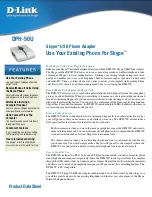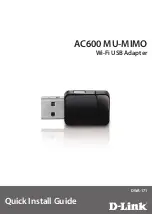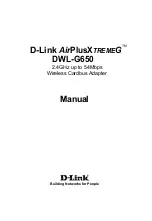
ZyXEL G-260 User’s Guide
Appendix D
76
Appendix D
Types of EAP Authentication
This appendix discusses some popular authentication types: EAP-MD5, EAP-TLS, EAP-
TTLS, PEAP and LEAP.
The type of authentication you use depends on the RADIUS server or the AP. Consult your
network administrator for more information. Your wireless LAN device may not support all
authentication types.
EAP-MD5 (Message-Digest Algorithm 5)
MD5 authentication is the simplest one-way authentication method. The authentication server
sends a challenge to the wireless station. The wireless station ‘proves’ that it knows the
password by encrypting the password with the challenge and sends back the information.
Password is not sent in plain text.
However, MD5 authentication has some weaknesses. Since the authentication server needs to
get the plaintext passwords, the passwords must be stored. Thus someone other than the
authentication server may access the password file. In addition, it is possible to impersonate an
authentication server as MD5 authentication method does not perform mutual authentication.
Finally, MD5 authentication method does not support data encryption with dynamic session
key. You must configure WEP encryption keys for data encryption.
EAP-TLS (Transport Layer Security)
With EAP-TLS, digital certifications are needed by both the server and the wireless stations
for mutual authentication. The server presents a certificate to the client. After validating the
identity of the server, the client sends a different certificate to the server. The exchange of
certificates is done in the open before a secured tunnel is created. This makes user identity
vulnerable to passive attacks. A digital certificate is an electronic ID card that authenticates the
sender’s identity. However, to implement EAP-TLS, you need a Certificate Authority (CA) to
handle certificates, which imposes a management overhead.
EAP-TTLS (Tunneled Transport Layer Service)
EAP-TTLS is an extension of the EAP-TLS authentication that uses certificates for only the
server-side authentications to establish a secure connection. Client authentication is then done
by sending username and password through the secure connection, thus client identity is
protected. For client authentication, EAP-TTLS supports EAP methods and legacy
authentication methods such as PAP, CHAP, MS-CHAP and MS-CHAP v2.
Summary of Contents for ZyXEL ZyAIR G-260
Page 1: ...ZyXEL G 260 802 11g Wireless USB 2 0 Adapter User s Guide Version 1 00 8 2005...
Page 11: ...ZyXEL G 260 User s Guide 11 Table of Contents...
Page 15: ...ZyXEL G 260 User s Guide 15 List of Tables...
Page 23: ...ZyXEL G 260 User s Guide 23 Chapter 1 Getting Started...
Page 33: ...ZyXEL G 260 User s Guide 33 Chapter 2 Wireless LAN Network...
Page 49: ...ZyXEL G 260 User s Guide 49 Chapter 3 ZyXEL Utility Configuration...
Page 53: ...ZyXEL G 260 User s Guide 53 Chapter 4 Maintenance...
Page 57: ...ZyXEL G 260 User s Guide 57 Appendix A...
Page 63: ...ZyXEL G 260 User s Guide 63 Appendix B...







































